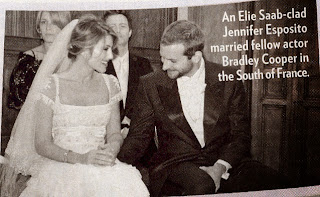It’s 2015 and a Jennifer Lawrence/Bradley Cooper movie is going straight to video. Let us help explain the confusion that is Serena. Hypable reports that the movie was filmed in the same time span as Silver Linings Playbook and American Hustle — films that earned Jennifer and Bradley a collective four Oscar nominations, with Jen taking home the Best Actress statue for Playbook. Given the box office success of the two movies, not to mention the Oscar nods and the star power of the two actors, it doesn’t seems practical to skip a theatrical release for Serena.
Movie critics chimed in with possible explanations, citing everything from poor reviews to the 18 months the movie spent in post-production. Vulture claims, “Some of its flaws are obvious: Bier has no feel for the Smoky Mountains, or the Depression, or, really, America, and the story doesn’t flow with any particular coherence, let alone momentum. Other flaws are harder to pin down. The tone is distressingly subdued for a film that’s ostensibly about rapacious ambition run amok. The script never really decides whether Serena is a calculating cutthroat or a winsome woodland foundling. (Or neither. Or both!)”
The New York Post panned Bradley and Jennifer’s performances, saying he “struggles with a Boston accent,” while she “has trouble making believable an eagle-training independent woman who goes mad after a miscarriage and the discovery that she may have to share her husband’s love with his newborn illegitimate son.” Back in September, the Hollywood Reporter noted that multiple distributors passed on picking up the movie, even when three different versions were cut. One potential buyer reportedly said, ”The film was so edited, it made no sense.” Source: popcrush.com
Speaking with The Times, Susanne Bier insists her vision for the Depression-era drama was never one for mass consumption, but things changed as the film's stars Bradley Cooper and Jennifer Lawrence became more famous. "I had to fight for Jennifer when we were financing the movie,” Bier says. “I had to fight for her! But we cast them both, and in the interim, they became these huge stars, and that changed the expectations around the movie. It was always a dark, dark, love story. Never a mainstream film.”
And while Bier never comes right out and says it, the participation of Cooper and Lawrence seemed to change as they became more cautious about the resulting picture. "It did become a more complex process. And I want to say that neither of them [Cooper and Lawrence] —I mean, Bradley has come to Copenhagen and has been engaging very much in the editing. And they both have been really supportive and great. But it, er, it is more complex. I think what happened is that a lot of people got more anxious because they became such big stars and...” Source: blogs.indiewire.com
Filming will take place at the old garage next to Heav’nly Donuts. North Reading Police said the film going by the names of both “Joy” and “Kay’s Baptism” will be back for more shooting on Winter Street on Monday, March 23 from 9 a.m. to 4 p.m. The film stars Jennifer Lawrence, Bradley Cooper and Robert DeNiro. They have been filming in Wilmington and North Reading over the past month. The Winter Street garage has been transformed into a Hollywood set. Source: patch.com
Hollywood has been criticized for not creating many strong roles for women, but “Divergent” boasts an enviable roster of female talent, including Sahilene Woodley, Naomi Watts and Kate Winslet. Not only is the movie centered on a woman, played by Woodley, but her main antagonist, played by Winslet, is female. “These explorations of young women in science fiction, by its category and very nature, feels fresh and exciting,” said producer Doug Wick.
Cast members said they hoped that the commercial response to “Divergent” and other female-driven blockbusters such as “The Hunger Games” may help shatter glass ceilings across the entertainment industry. “We have A-list, we have new stars, we have veterans, we have the whole spectrum of female talent,” said Maggie Q, one of the film’s stars. “Everybody brings what they bring in such a complete way that I really hope that more female ensembles will happen because they really don’t happen that often.” Source: variety.com
Suki Waterhouse is preparing to make an impact in The Divergent Series: Insurgent. The 23-year-old model plays the role of Marlene, a member of the Dauntless faction in the sequel to the 2014 movie Divergent. Divergent was the first film in the planned series and last year Summit Entertainment announced the third book in the trilogy will be split into two parts with Allegiant - Part 1 due out in March 2016 and Allegiant - Part 2 scheduled for release in March 2017.
Suki, no doubt, has been getting plenty of acting tips from her Oscar-nominated boyfriend Bradley Cooper. 'We were introduced and hit it off almost immediately,' she said in an interview with Rollercoaster magazine. 'We were dancing at the after-party, and he asked me if I fancied going to a club. We went to Cirque Le Soir in London – and he's a ridiculously good dancer,' she added. Source: www.dailymail.co.uk
Suki Waterhouse in GQ magazine, April 2015
UPDATE: Bradley Cooper and Suki Waterhouse have split up. Source: uk.eonline.com










.jpg)






.JPG)











_01.jpg)

.jpg)

_01.jpg)



.jpg)




























